rib
(redirected from sternal rib)Also found in: Dictionary, Thesaurus, Medical.
rib
Rib
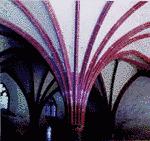
diagonal rib
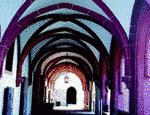
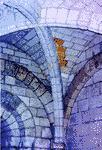
groined rib

intermediate rib

ridge rib

tierceron
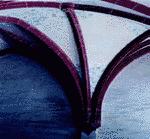
Rib
(in aircraft construction), an element of the transverse primary structure of the wing truss, tail assembly, or other parts of an aircraft that is designed to impart to them the shape of an airfoil section. Ribs are attached to the longitudinal framework (stringers or spars) and are the basis for attaching the skin.
Rib
any one of the paired elements of the axial skeleton in vertebrates, including man, that articulate with the spine. Ribs form primarily in the myosepta between successive muscle segments of the trunk.
There are two types of ribs in animals—upper and lower ribs. The lower ribs are primarily located along the sides of the entire body cavity between the abdominal and lateral muscles, along the interior edge of the transverse myosepta. These ribs are established near the spinal column and grow centrifugally. The upper ribs lie in the thick of the musculature, where the horizontal myoseptum, which separates spinal from ventral musculature, intersects the transverse myosepta. These ribs are established near the exterior edges of the transverse myosepta and grow centripetally.
The lower ribs support the musculature and, by covering the body cavity, protect the internal organs. Initially, the upper ribs apparently not only supported but also protected organs of the lateral line. It seems that ancient vertebrates had both upper and lower ribs, as do existing Polypterus. Caudates and salientians have upper ribs and Gymnophiona and all amniotes have lower ribs; some believe that all terrestrial vertebrates have only upper ribs. In fish and amphibians the ventral tip of the ribs ends freely, being located in the thick of the muscles. In amniotes part of the ribs are joined to the sternum and form the thorax—these ribs are called true sternal ribs. False ribs are joined to true ribs and not to the sternum. Floating ribs, which terminate freely, are located behind false ribs.
In terrestrial vertebrates ribs are articulated with the spine in two places: a capitulum and a tuberculum, which develop on the distal tips of the ribs, are connected, respectively, with the bodies of the vertebrae and the transverse process. This ensures the strength of the articulation and the mobility of the ribs, which are extremely important for costal respiration. In terrestrial vertebrates rudimentary cervical ribs are joined to cervical vertebrae; sacral ribs, which support the pelvis, are joined to sacral vertebrae.
In man there are 12 pairs of ribs. Each rib has a long bony portion and a short cartilaginous one. The seven upper ribs are true ribs, the eighth, ninth, and tenth ribs are false ribs, and the 11th and 12th ribs are floating ribs. Fractures are the most common disorders of the ribs.
V. B. SUKHANOV
rib
[rib]rib
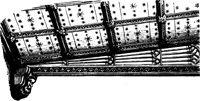
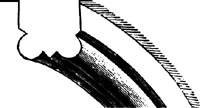
rib

